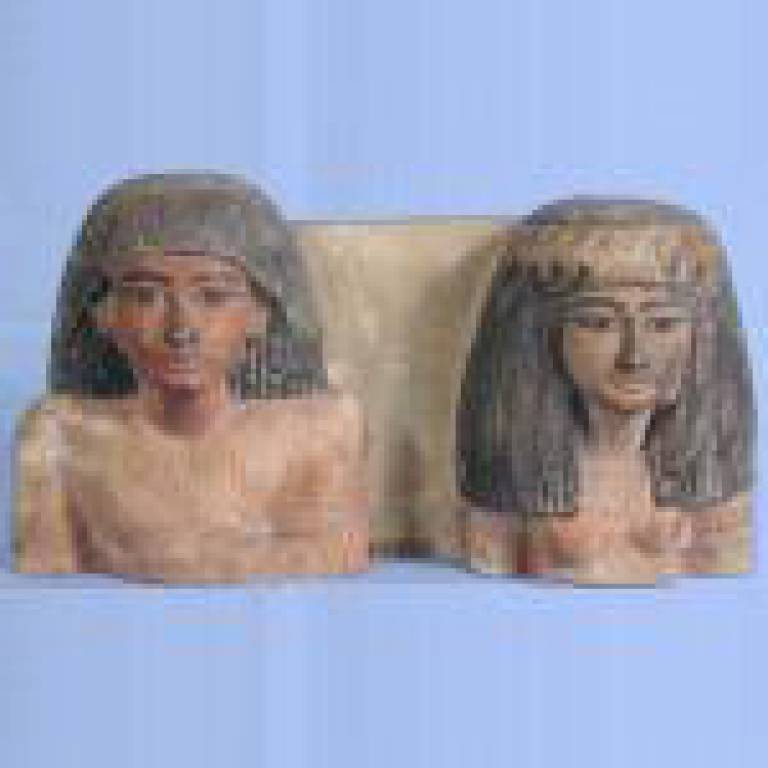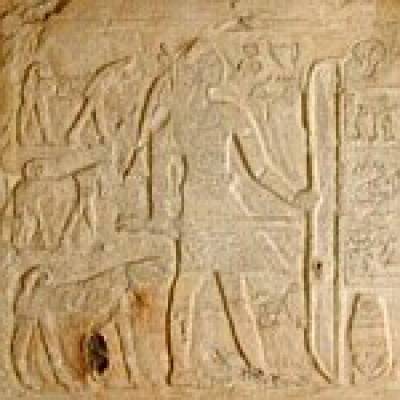New web project brings ancient Egypt to life
29 September 2003
A major collaboration between UCL's Petrie Museum of Egyptian Archaeology and the Centre for Advanced Spatial Analysis (CASA), 'Digital Egypt for Universities' has reached completion this summer with the delivery of a 3,000-page website complete with virtual reality reconstructions of architecture from prehistory to the middle ages.

The online teaching and learning resource was funded by the Joint Information Systems Committee for Higher Education. The project is one of several UCL contributions to the Distributed National Electronic Resource, an online provision for the education community. The site is an extensive and free educational package comprising graphics, images and text entries. It is intended as a model for expanding access to and productive use of any university collection.
Dr Stephen Quirke, Petrie Museum Curator and manager of the project, explained: "'Digital Egypt' demonstrates the unique potential of the university museum - an almost forgotten resource in contemporary higher education. We aimed to show how a collection can pack a freely available website with the kind of data that can support classroom and seminar debate. In the medium to longer term I expect the internet to deliver subject-specific material into multidisciplinary environments. Eventually, students in different disciplines could support one another's learning through their different insights into physical objects - full interdisciplinarity, where an archaeology student, a geology student and an art history student can begin to fathom the plural dimensions, the 'metaphysics', of the material world which we inhabit and create."

He continued: "'Digital Egypt' is aimed at and beyond archaeology or Egyptology - at university students and teachers of subjects ranging from architecture and art, medicine and astronomy, religion and literature, to gender studies, cultural studies and museum studies. UCL already covers the full range of arts and humanities, and it should be at the forefront of the development of collections to reunite them."
Building on the expertise of CASA and the institute, and the previous creation
of a web database of all 80,000 artefacts in the museum, the project puts the
7,000 years of settled life in Egypt into context. Dr Naru Shiode (CASA) and
Dr Wolfram Grajetzki (Institute of Archaeology) worked together to construct
the most extensive resource of its type in existence. Users are also encouraged
to actively engage with the features of the site, and question the accuracy
of what is before them, using the site as a springboard for further discussion
and investigation.
Dr Quirke said: "The maps and two-dimensional reconstructions of archaeological
finds allow users to tie different geographical levels together. For instance,
you could view an individual burial site, then see background information on
the excavation of a wider site and then view maps of the entire region. This
helps to restore the humanity in space, which risks being lost on a simple map
alone." He continued: "The material is presented by theme, place
and time, rather than structured courses. This gives the greatest possible flexibility
to the teacher, for selecting their own use of the resource in the classroom,
or to students as material for presentations."
Images: Top - Sculpture, mid 18th dynasty, Petrie Museum. Bottom - Stela of the First Intermediate Period, Petrie Museum.
To find out more about 'Digital Egypt' use the link below.
Link: Digital Egypt
 Close
Close

